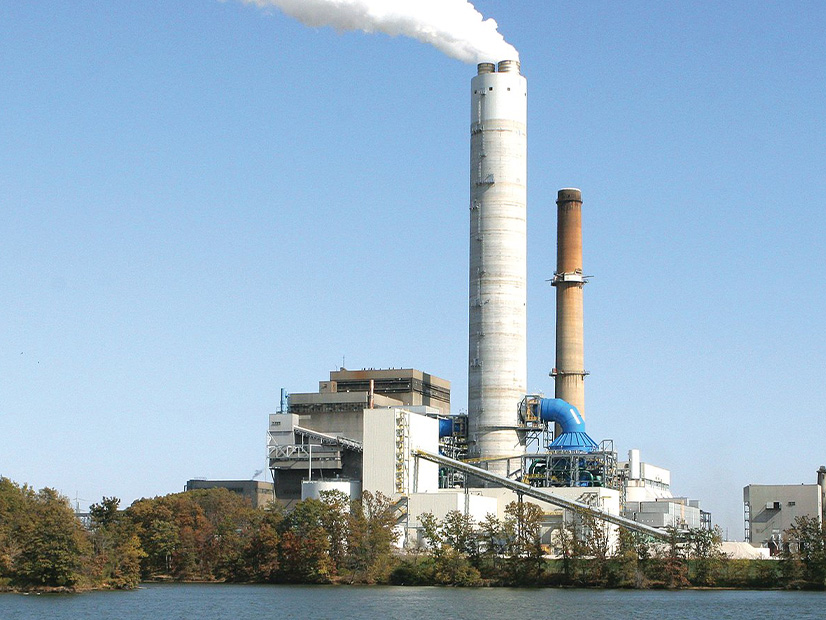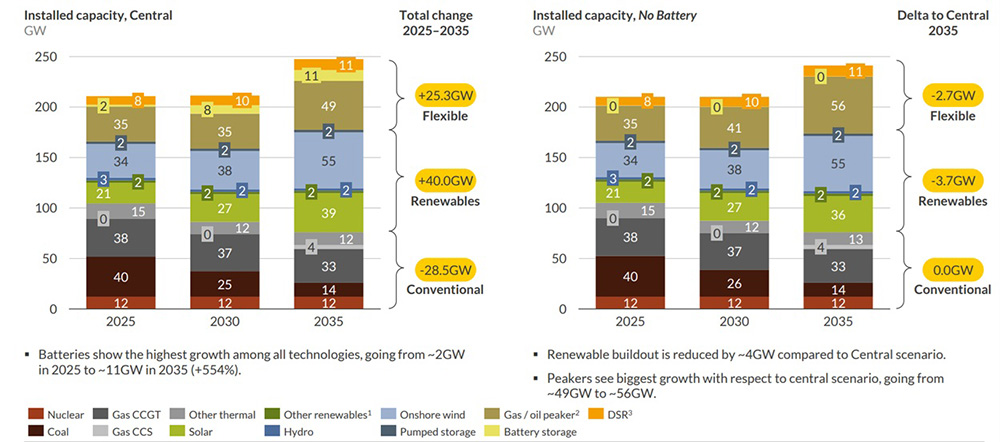The Trump administration has taken further steps to thwart renewable energy development, adding new directives limiting wind and solar development on federal land and at sea.
Most notably, an Aug. 1 order (SO 3438) from Interior Secretary Doug Burgum prioritizes efficient use of federal land for energy generation — an impossible challenge for sprawling solar and wind farms, which need square miles to generate as much power as a fossil or nuclear plant covering just a few acres.
In other recent moves, the Department of the Interior’s Bureau of Ocean Energy Management on Aug. 4 rescinded the schedule of seabed leases for offshore wind power development, one of President Donald Trump’s regular targets.
On July 30, BOEM rescinded designation of all wind energy areas on the outer continental shelf along the East, West and Gulf coasts — more than 3.5 million acres determined to hold the best potential for wind farms.
A July 29 order (SO 3437) from Burgum ended “preferential treatment” for wind projects and placed new potential hurdles to its development. (See Trump Administration Takes Another Swing at Wind Power.)
A July 15 internal directive required any and all decisions and actions pertaining to wind and solar at Interior to be reviewed and signed in succession by two high-level deputies and then Burgum himself. (See Interior Dept. Places Solar, Wind Under Close Review.)
The steady stream of directives is becoming increasingly redundant in their intended effect if not their specified actions.
There are likely multiple reasons for this, Ted Kelly, lead counsel for U.S. clean energy at the Environmental Defense Fund, told NetZero Insider. If one strategy falls to a court challenge, the others might stand. Also, the administration is very message-oriented: Serial announcements make Interior look good to Trump’s inner circle and make Trump look good to his core constituency, he added.
The number and tenor of the directives also can create paralyzing uncertainty within the profit-driven private sector.
“I think we’ve seen it in different areas; they kind of have a dual strategy of, create the uncertainty as much as they can, and then also get to the aggressive attacks when they can,” Kelly said.
EDF saw this two-track approach with the stop-work order on Empire Wind 1 and revocation of a loan guarantee for the Grain Belt Express transmission line, he added.
Kelly said EDF is challenging some actions in court, but others are not actionable yet.
Burgum offered a robust justification with his Aug. 1 order, announcing it as an effort to “Rein in Environmentally Damaging Wind and Solar Projects.” He said the order would better manage federal lands and minimize environmental impact on them: “Gargantuan, unreliable, intermittent energy projects hold America back from achieving U.S. energy dominance while weighing heavily on the American taxpayer and environment.”
Federal law requires Interior to make judicious decisions about use of federal land and seabed, the news release continued. “These laws ultimately raise the question of whether the use of federal lands for wind and solar projects is permissible, given these projects’ encroachment on other land uses and their disproportionate land requirements, especially when reasonable project alternatives with higher capacity densities are technically and economically feasible.”
Interior can do only so much to thwart onshore renewables development: It holds sway over public land, but plenty of private land is available.
Offshore wind energy development, however, is entirely within federal purview, unless the turbines are placed close to shore in state waters — a politically and technically challenging step that has not been proposed.
On his first day in office, Trump directed a halt to all new offshore wind power leasing and directed an ominous-sounding review of existing leases for potential modification or termination. In the wake of that memorandum, federal permitting reviews and other regulatory work essential to planning an offshore wind farm slowed or halted.
But notwithstanding the weekslong Empire Wind stop-work order — which actually may have been an attempt to twist the arm of the governor of New York state over natural gas pipeline permitting, rather than a true attempt to stop the wind project — the Trump administration has allowed construction to continue on the five active projects: Coastal Virginia Offshore Wind, Vineyard Wind 1, Revolution Wind, Empire Wind 1 and Sunrise Wind.
The administration has moved to prevent any steel from being placed in the water on other projects, however, including a revocation of the EPA air permit for Atlantic Shores Offshore Wind and a challenge of the Maryland construction permit for US Wind.
Wind opponents are suing the federal government (1:2025cv00152 and 1:2024cv03111) for approving construction of US Wind’s Maryland proposals. The government told the U.S. District Court for Delaware on July 28 that it plans to move for a voluntary remand of US Wind’s construction and operations plan.
If granted, this would send the massive 90-part blueprint approved by the wind-friendly Biden administration back for review by the Trump administration, potentially dooming it.
Boosting fossil fuel production and sidelining the renewables sector is exactly the turnabout from the Biden years that Trump promised on the campaign trail.
But it is not good policy, Kelly said, given that major increases in generation capacity are at least five years away for natural gas and 10 for nuclear.
“There’s the real contradiction and hypocrisy of their insistence, on the one hand, that there’s an energy emergency and that we need to get all generation online as quickly as possible,” he said. “But on the other hand, these clean energy types of projects don’t count as energy, and we’re going to throw up roadblocks in the middle of them, when really they’re the only things, other than some gas plants that are already under construction or under order, we can build in the next five to 10 years.”
Wind and solar provided 14% of utility-scale generation in the U.S. in 2023 and accounted for 78% of capacity additions in 2024.
In January 2025, shortly before President Joe Biden left office, the National Renewable Energy Laboratory released an analysis showing federal lands hold the potential for 5,750 GW of utility-scale photovoltaics, 975 GW of geothermal and 875 GW of wind generation.

